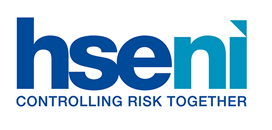Licensable Asbestos Containing Materials (ACM) Removal
If your employees carry out asbestos removal work notifiable as licensable, then you have a legal duty to ensure that they are under medical surveillance by a doctor appointed by HSENI.
This is work with the most dangerous forms of asbestos, where asbestos fibres can be most easily released into the air, leading to a higher risk of worker exposure. This includes all work with asbestos coatings and most work with asbestos insulation and asbestos insulating board.
Anyone who carries out licensable work must have been medically examined in the past two years by a doctor individually appointed by HSENI for that purpose (an ‘appointed doctor’). Therefore the first medical examination must take place before your employee starts licensable work.
An appointed doctor is a registered medical practitioner appointed by HSENI to undertake statutory medical surveillance. The purpose of statutory medical surveillance is for the appointed doctor to monitor your employees for early signs of potential health problems caused by the work they are doing and provide them with advice on whether further exposure to the particular hazard is appropriate. The appointed doctor should also make you aware of any emerging health issues so you can review your risk assessment and ensure risks to your employees’ health are properly controlled.
For more details on how to find an appointed doctor and appropriate forms, please see the appointed doctors web page at the following link:
Notifiable Non-Licensed Work (NNLW)
Since 30 April 2015 all workers carrying out notifiable non-licensed work (NNLW) need to have a medical examination before they start this type of work. This consists of a chest examination and a test to check lung performance. These medical examinations may be offered privately for a fee by GPs and by other medical professionals including doctors appointed by HSENI for the licensed worker's medical examinations.
Examinations will then need to be repeated at least every three years, as long as the worker continues to do NNLW.
Examples of NNLW are as follows:
- large-scale removal of textured decorative coatings using steaming or gelling methods
Minor, short duration work:
- to remove asbestos insulating board as part of a refurbishment project involving asbestos insulation (for example repairing minor damage to a small section of pipe insulation where the exterior coating has been broken or damaged)
Removal of:
- asbestos cement products (for example roof sheeting) where the material has been substantially damaged or broken up (for example as a result of fire or flood damage)
- asbestos cement products (for example roof sheeting) where the removal activity will mean that the material will be substantially broken up, creating significant quantities of dust and debris (for example ‘dropping’ an asbestos cement roof)
- asbestos paper and cardboard products if not firmly bonded in a matrix
A licensed worker medical will be acceptable for NNLW, but not the other way round.
There is no requirement for a medical examination if the asbestos removal is straightforward non-licensed.
